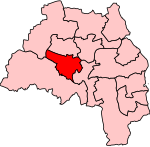High Level Bridge, River Tyne

The High Level Bridge is a road and railway bridge spanning the River Tyne between Newcastle upon Tyne and Gateshead in North East England. It was built by the Hawks family from 5,050 tons of iron. George Hawks, Mayor of Gateshead, drove in the last key of the structure on 7 June 1849, and the bridge was officially opened by Queen Victoria later that year. It was designed by Robert Stephenson to form a rail link towards Scotland for the developing English railway network; a carriageway for road vehicles and pedestrians was incorporated to generate additional revenue. The main structural elements are tied cast-iron arches. It continues to carry rail traffic, although the King Edward bridge nearby was opened in 1906 to ease congestion. The roadway is also still in use, with a weight restriction. It is a Grade I listed structure.
Excerpt from the Wikipedia article High Level Bridge, River Tyne (License: CC BY-SA 3.0, Authors, Images).High Level Bridge, River Tyne
Pipewellgate,
Geographical coordinates (GPS) Address External links Nearby Places Show on map
Geographical coordinates (GPS)
| Latitude | Longitude |
|---|---|
| N 54.9669 ° | E -1.6086 ° |
Address
High Level Bridge
Pipewellgate
NE8 2BJ
England, United Kingdom
Open on Google Maps










